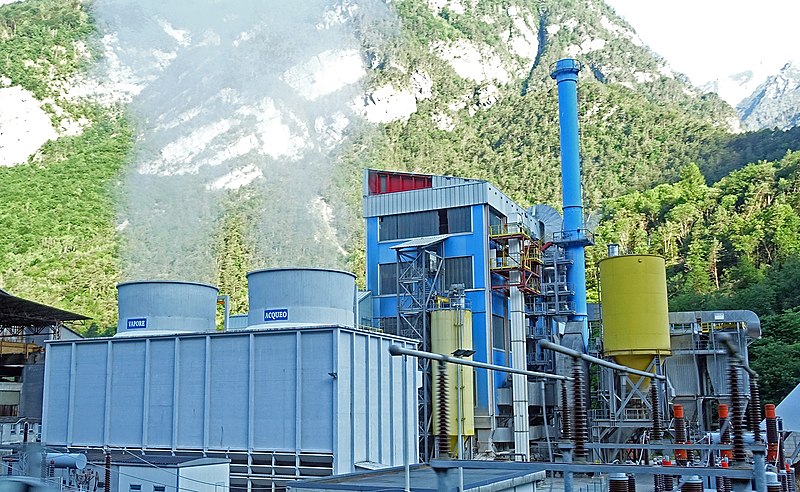Biomass Power
Biomass power is an essential renewable energy source that converts organic materials into electricity, reducing greenhouse gas emissions and providing a sustainable alternative to fossil fuels.
 SICET, Biomass power plant in Ospitale di Cadore, Italy.
SICET, Biomass power plant in Ospitale di Cadore, Italy.
View open jobs in this Solution
Example Companies
- Enviva - Produces sustainable wood pellets for biomass energy.
- Drax Group - Operates the largest biomass power station in the UK.
- Green Plains - Specializes in ethanol production and biomass energy.
- Abengoa - Develops innovative biomass power projects.
- POET - Focuses on biofuels and biomass power solutions.
Overview
Biomass power converts organic materials such as agricultural waste, wood chips, and other biomass into electricity and heat through various processes. This renewable energy source helps reduce greenhouse gas emissions and provides a sustainable alternative to fossil fuels.
Progress Made
Significant strides have been made in developing biomass power over the last decade to combat climate change. Innovations include technologies like pyrolysis, gasification, anaerobic digestion, combustion, and pyrolysis-combustion, all contributing to the reduction of greenhouse gas emissions.
- Breakthrough Technologies: Development of cellulosic ethanol and algae-based biofuels.
- Prominent Supporters: Organizations like the US Department of Energy, the US Environmental Protection Agency, and the International Renewable Energy Agency.
Solutions by Sector
Agricultural Waste
- Anaerobic Digestion: Converting agricultural waste into biogas and biofertilizer.
- Pyrolysis: Producing bio-oil and biochar from agricultural residues.
- Gasification: Transforming biomass into syngas for electricity generation.
Case Studies:
- Enviva: Produces sustainable wood pellets from agricultural waste for biomass energy (Enviva).
- Green Plains: Specializes in converting agricultural residues into ethanol and biomass energy (Green Plains).
- Drax Group: Uses agricultural residues to power the largest biomass power station in the UK (Drax Group).
Forestry Waste
- Combustion: Burning forestry waste to generate heat and electricity.
- Biochar Production: Creating biochar from forestry residues for soil improvement and carbon sequestration.
- Pelletization: Compressing forestry waste into pellets for efficient combustion.
Case Studies:
- Abengoa: Develops innovative biomass power projects using forestry waste (Abengoa).
- POET: Focuses on biofuels and biomass power solutions using forestry residues (POET).
- Pacific Biochar: Produces high-quality biochar from forestry waste for agricultural applications (Pacific Biochar).
Municipal Waste
- Waste-to-Energy: Converting municipal solid waste into electricity and heat.
- Landfill Gas Recovery: Capturing methane from landfills for energy production.
- Anaerobic Digestion: Processing municipal organic waste into biogas and biofertilizer.
Case Studies:
- Covanta: Operates waste-to-energy facilities that convert municipal waste into electricity (Covanta).
- Veolia: Implements landfill gas recovery projects to produce renewable energy (Veolia).
- Bioenergy DevCo: Develops anaerobic digestion facilities to process municipal organic waste (Bioenergy DevCo).
Lessons Learned
- Sustainable Biomass Sources: Crucial to prevent releasing more carbon dioxide than sequestration.
- Efficient Conversion Technologies: Emphasize efficient technologies to minimize carbon emissions.
- Full Life Cycle Consideration: Assess the environmental impact accurately by considering the full life cycle.
Challenges Ahead
- Higher Cost: Biomass power is often more expensive compared to traditional fossil fuels.
- Limited Infrastructure: Insufficient infrastructure for biomass power.
- Research and Development: Need for further research to enhance biomass power efficiency.
Best Path Forward
Continued advancement of biomass power to counteract climate change requires:
- Ongoing Research and Development: Invest in scalable technology.
- Collaboration: Work with experienced entities in the field.
- Affordability: Ensure the technology is cost-effective.
Image credit: SICET, Biomass power plant in Ospitale di Cadore, Italy